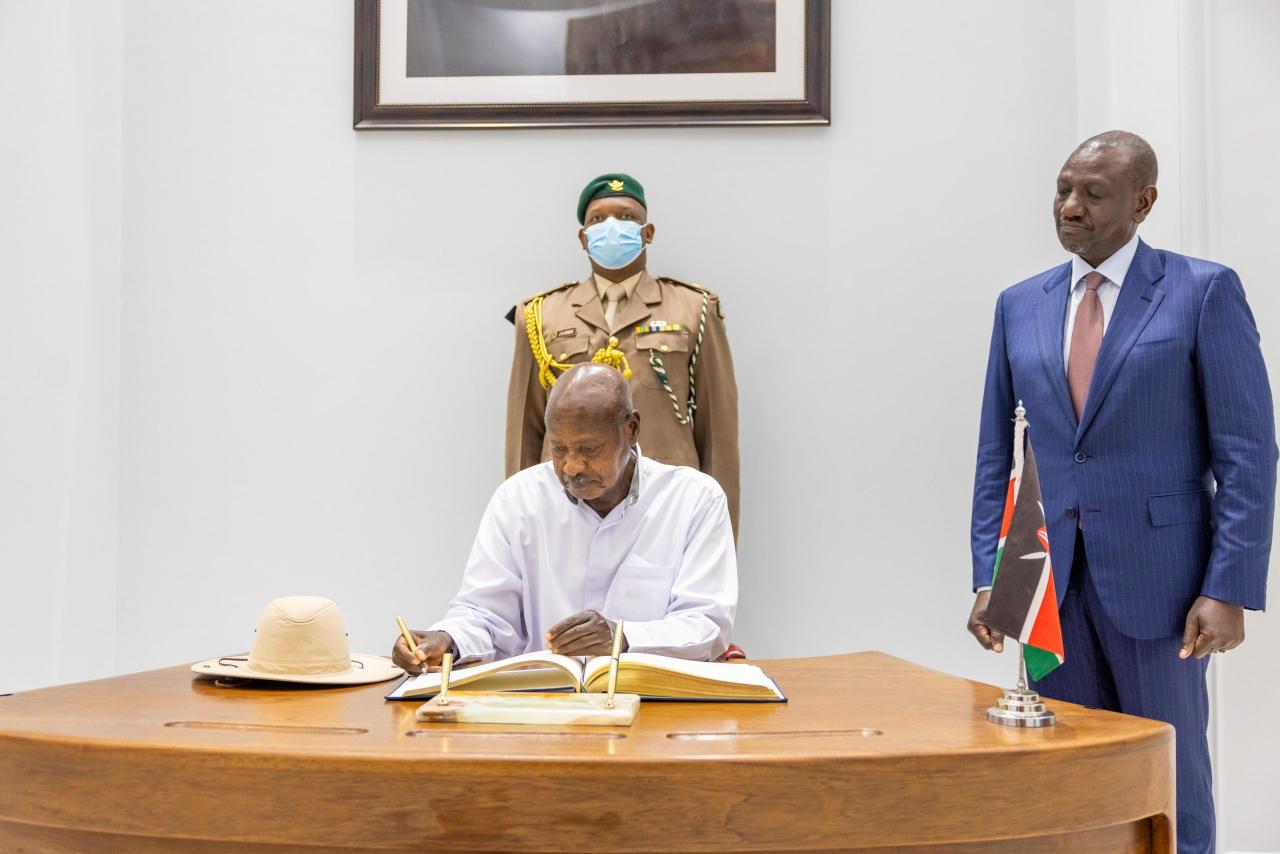Kenya and Uganda have taken a major step to strengthen their partnership by signing eight Memoranda of Understanding during President Yoweri Museveni’s visit to Nairobi on Wednesday.
These agreements cover critical sectors such as transport, agriculture, mining, fisheries, tourism, livestock, standards, and investment, aimed at boosting cooperation and regional development.
The two countries are focusing on improving infrastructure, trade facilitation, and resource management to create a more integrated and prosperous East African region.
President William Ruto explained that the transport and logistics MoU will modernise transport networks and enhance the movement of people and goods.
He highlighted plans to extend Kenya’s Standard Gauge Railway from Naivasha to Malaba and onward into Uganda, as well as upgrading the Nairobi-Nakuru-Mau Summit road to a dual carriageway reaching the border.
Ruto said, “We are united in our commitment to deepening bilateral cooperation and delivering shared prosperity, while working together towards a stronger and integrated region. The MoU we have just signed provides a strong framework to support that cooperation.”
The standards and quality assurance agreement will strengthen ties between Kenya Bureau of Standards and Uganda National Bureau of Standards. This will help curb the flow of illicit and substandard products across both countries and enhance trade security.
Agriculture and livestock cooperation will be intensified through collaboration on veterinary services and crop health, which will support food security efforts. The fisheries agreement seeks to unlock the potential of the blue economy shared by the two nations.
The Greater Busia Metro Project will benefit from joint infrastructure development on both sides of the border, fostering growth in this key border town. On mining, the MoU aims to promote responsible extraction, institutional strengthening, and tackle smuggling of minerals between the two countries. Tourism cooperation will include joint marketing efforts, cultural exchanges, and boosting ecotourism.
President Ruto noted ongoing efforts to resolve cross-border challenges, including the dispute over Migingo Island fishing rights. “We also acknowledged the ongoing negotiations on other important instruments, notably a Cross-Border Resource Sharing Agreement, which we hope to finalise soon,” he said.
Trade concerns were also raised, especially on non-tariff barriers that disrupt the free flow of goods and hurt farmers and small traders.
Ruto stressed the need for “a principled, practical, and time-bound resolution of these barriers,” pointing to the upcoming Joint Ministerial Commission Mid-Term Review and Joint Trade Committee meeting as key opportunities to address these issues.
Both leaders reaffirmed their commitment to advancing East African Community integration goals such as the Customs Union, Common Market, Monetary Union, and eventual Political Federation.
Highlighting a new milestone in industrial cooperation, Ruto announced, “Kenya and Uganda have agreed to establish the largest steel factory in the region.
This joint project will reduce our reliance on steel imports and allow us to produce for export.”
The President said the MoUs will not only strengthen economic and diplomatic relations but also promote people-to-people ties, ensuring the benefits of cooperation reach ordinary citizens.
President Museveni encouraged East African nations and Africa as a whole to build stronger markets and increase local production.
“The United States became prosperous because of creating a large market, making trade easier and more efficient," he said.
Musalia also reaffirmed Uganda’s commitment to resolving the Migingo Island issue.

